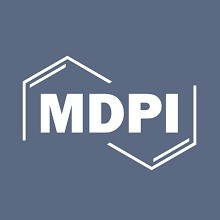
دانلود مقاله طراحی مدل بلوغ هوش تجاری و تحلیل برای آموزش عالی
چکیده
مقدمه
مطالعات مرتبط
طرح پژوهش
تحقیقات علوم طراحی گام به گام
مدل تکامل HE-BIA v2.0
روش ارزیابی
بحث
نتیجه گیری
منابع
Abstract
Introduction
Related Work
Research Design
Design Science Research Step-by-Step
The HE-BIA Maturity Model v2.0
The Assessment Method
Discussion
Conclusions
References
چکیده
سیستمهای هوش تجاری و تجزیه و تحلیل (BIA) نقش اساسی در سازمانها ایفا میکنند و بینشهای عملی را ارائه میکنند که کاربران تجاری را قادر میسازد تا تصمیمهای آگاهانهتر و مبتنی بر داده اتخاذ کنند. با این حال، بسیاری از مؤسسات آموزش عالی (HE) مدلهای قابل دسترس و قابل استفاده برای هدایت آنها از طریق توسعه تدریجی راهحلهای BIA برای درک ارزش بالقوه کامل BIA ندارند. این وضعیت روز به روز حادتر می شود زیرا HE امروز در یک محیط پیچیده و پویا که توسط جهانی شدن و توسعه سریع فناوری اطلاعات به وجود آمده است، فعالیت می کند. این مقاله یک مدل بلوغ BIA ویژه دامنه (MM) برای HE- مدل بلوغ HE-BIA پیشنهاد میکند. به دنبال یک رویکرد علم طراحی، این مقاله به جزئیات طراحی، توسعه و ارزیابی دو مصنوع میپردازد: روش MM و روش ارزیابی بلوغ. مرحله ارزیابی شامل سه مطالعه موردی با دانشگاه های کشورهای مختلف و دو کارگاه با متخصصان بیش از ده کشور بود. مؤسسات HE گزارش دادند که ارزیابی با مدل HE-BIA (i) برای نیازهای آنها مفید و کافی بود. (ii) و به درک بهتر وضعیت فعلی چشم انداز BIA آنها کمک کرد و به صراحت نشان داد که یک برنامه BIA یک تلاش فناوری و همچنین یک توسعه سازمانی است.
توجه! این متن ترجمه ماشینی بوده و توسط مترجمین ای ترجمه، ترجمه نشده است.
Abstract
Business Intelligence and Analytics (BIA) systems play an essential role in organizations, providing actionable insights that enable business users to make more informed, data-driven decisions. However, many Higher Education (HE) institutions do not have accessible and usable models to guide them through the incremental development of BIA solutions to realize the full potential value of BIA. The situation is becoming ever more acute as HE operates today in a complex and dynamic environment brought forward by globalization and the rapid development of information technologies. This paper proposes a domain-specific BIA maturity model (MM) for HE–the HE-BIA Maturity Model. Following a design science approach, this paper details the design, development, and evaluation of two artifacts: the MM and the maturity assessment method. The evaluation phase comprised three case studies with universities from different countries and two workshops with practitioners from more than ten countries. HE institutions reported that the assessment with the HE-BIA model was (i) useful and adequate for their needs; (ii) and contributed to a better understanding of the current status of their BIA landscape, making it explicit that a BIA program is a technology endeavor as well as an organizational development. View Full-Text
Introduction
Business Intelligence and Analytics (BIA) systems play an essential role in organizations, providing actionable insights that enable business users to make more informed, data-driven decisions [1,2]. Conceptually, business intelligence (BI) systems combine architectures, databases (or data warehouses), analytical tools, and applications to provide managerial decision support [3,4]. The goal of BI is to provide the right information, to the right business users, at the right time and with the right context.
Conclusions
In this paper, we presented a domain-specific BIA maturity model for HEIs validated by practitioners in the field: how it was conceived, the methodological design process that we followed, the model itself, and finally, the demonstrations and validation of its coverage, accuracy, and usability.
The design of the MM was driven by five requirements. R1 established that the model should enable each HEI to conduct a self-assessment exercise. This was validated with three case studies, in which all HEIs reported that the exercise was very useful and relevant to assess their current status of BIA development
